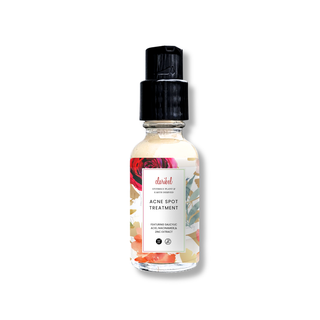
Reduce Pores on Skin: Myths and Ways to Minimize Them
Are you struggling with visible pores that seem to be getting larger by the day? You're not alone. Many people are on a quest for smoother, more refined skin. In this comprehensive guide, we'll explore expert tips and techniques to help you reduce the appearance of pores and achieve that coveted flawless complexion. Let's dive in and uncover the secrets to reduce pores on skin for a smoother, more radiant appearance.
Understanding Pores: What They Are and Why They Appear Larger
Pores are tiny openings on the surface of your skin that allow sebum (natural oils) and sweat to reach the surface. While they play a crucial role in maintaining skin health, their appearance can sometimes be a cause for concern. Larger pores can make your skin look textured and less smooth, affecting your overall complexion.
Several factors contribute to the appearance of enlarged pores. Genetics play a significant role, as some people are naturally predisposed to having larger pores. Age is another factor, as skin loses elasticity over time, causing pores to appear more prominent. Additionally, excess oil production, dead skin cell buildup, and sun damage can all contribute to the appearance of enlarged pores.
Understanding the nature of pores is the first step in addressing their appearance. By recognizing that pores serve an essential function in skin health, you can approach pore reduction methods with a balanced perspective, focusing on minimizing their appearance rather than attempting to eliminate them entirely.
Our Papaya Enzyme Exfoliation Mask is safe for all skin types and is highly recommended to help reduce pores on skin and minimize them.
The Science Behind Pore Size: Factors That Influence Their Appearance
The size and visibility of your pores are influenced by various factors, both internal and external. Let's explore the science behind pore size to better understand how to address this common skin concern:
-
Sebum Production: Excess oil production can lead to clogged pores, making them appear larger. This is why individuals with oily skin often struggle with more visible pores.
-
Collagen and Elastin: These proteins provide structure and elasticity to your skin. As you age and produce less collagen and elastin, pores can appear more prominent due to decreased skin firmness.
-
Sun Damage: Prolonged sun exposure can break down collagen and elastin, leading to less supple skin and more noticeable pores.
-
Hormones: Hormonal fluctuations can affect sebum production, potentially leading to enlarged pores during certain times, such as menstruation or pregnancy.
-
Dehydration: When your skin is dehydrated, it may produce more oil to compensate, potentially leading to clogged and enlarged pores.
Understanding these factors can help you make informed decisions about your skincare routine and lifestyle choices to minimize the appearance of pores.
Exfoliation Techniques for Reducing Pore Size
Exfoliation is a crucial step in any pore-reducing skincare routine. By removing dead skin cells and unclogging pores, you can help minimize their appearance and create a smoother skin texture. Here are some effective exfoliation techniques to incorporate into your regimen:
Chemical Exfoliation
-
Alpha Hydroxy Acids (AHAs): These water-soluble acids, such as glycolic and lactic acid, work on the skin's surface to remove dead skin cells and promote cell turnover.
-
Beta Hydroxy Acids (BHAs): Oil-soluble acids like salicylic acid penetrate deeper into the pores, making them excellent for oily and acne-prone skin.
-
Enzyme Exfoliants: Gentle enough for sensitive skin, enzymes from fruits like papaya and pineapple can dissolve dead skin cells without harsh scrubbing.
Physical Exfoliation
-
Gentle Scrubs: Use products with fine particles like jojoba beads or rice powder for a gentle physical exfoliation.
-
Cleansing Brushes: Tools like sonic cleansing brushes can provide thorough yet gentle exfoliation when used correctly.
-
Microdermabrasion: This professional treatment uses tiny crystals to buff away dead skin cells and promote collagen production.
Remember to exfoliate no more than 2-3 times per week to avoid over-exfoliation, which can irritate the skin and potentially worsen the appearance of pores.
Our Papaya Enzyme Exfoliation Mask is safe for all skin types and is highly recommended to help reduce pores on skin and minimize them.
Powerful Active Ingredients to Help Reduce Pores on Skin
Incorporating the right active ingredients into your skincare routine can make a significant difference in reducing pores on skin. Here are some powerful ingredients to look for in your products:
-
Retinoids: Derivatives of vitamin A, retinoids promote cell turnover, unclog pores, and stimulate collagen production. They can help refine skin texture and reduce the appearance of enlarged pores over time.
-
Niacinamide: This form of vitamin B3 helps regulate sebum production and improve skin elasticity, both of which can contribute to minimizing the appearance of pores.
-
Vitamin C: A potent antioxidant, vitamin C helps protect the skin from free radical damage and promotes collagen production, leading to firmer skin and less noticeable pores.
-
Hyaluronic Acid: While it doesn't directly shrink pores, hyaluronic acid helps keep the skin hydrated, preventing excess oil production that can lead to clogged pores.
-
Clay: Ingredients like kaolin or bentonite clay can help absorb excess oil and draw out impurities from the pores, temporarily minimizing their appearance.
When incorporating these ingredients into your routine, start slowly and introduce one new product at a time to avoid potential irritation or reactions.
Makeup Tips to Camouflage Large Pores
While skincare is crucial for long-term pore reduction, makeup can provide an immediate solution for minimizing the appearance of large pores. Here are some expert makeup tips to help you achieve a smooth, pore-less finish:
-
Prime Your Canvas: Start with a pore-filling primer to create a smooth base for your makeup. Look for silicone-based primers that can fill in and blur the appearance of pores.
-
Choose the Right Foundation: Opt for matte or semi-matte foundations that won't emphasize texture. Avoid dewy or luminous formulas, as they can draw attention to pores.
-
Application Technique: Use a damp beauty sponge or a stippling brush to press the foundation into the skin rather than dragging it across the surface, which can accentuate pores.
-
Set with Powder: Use a finely-milled setting powder to lock in your makeup and further blur the appearance of pores. Apply with a pressing motion rather than sweeping to avoid disturbing your foundation.
-
Highlight Strategically: Avoid applying shimmery highlighters to areas with visible pores, as this can draw attention to texture. Instead, focus on the high points of your cheekbones and the bridge of your nose.
Remember, less is often more when it comes to minimizing the appearance of pores with makeup. Building up thin layers of product can help achieve a more natural, pore-less finish.
Common Myths About How to Reduce Pores on Skin
There are many misconceptions surrounding how to reduce pores on skin. Let's debunk some common myths to help you make informed decisions about your skincare:
Myth 1: You can permanently shrink or close your pores
Truth: Pores don't open and close like doors. Their size is largely determined by genetics and age. While you can't permanently shrink pores, you can minimize their appearance through proper skincare and treatments.
Myth 2: Cold water closes pores, hot water opens them
Truth: Temperature doesn't affect pore size. Hot water can help loosen debris in pores, making cleansing more effective, but it doesn't physically open them. Similarly, cold water may temporarily tighten the skin, but it doesn't close pores.
Myth 3: All pore strips are good for your skin
Truth: While pore strips can remove surface-level blackheads, they can also remove necessary oils and potentially damage the skin if used too frequently. They're not a long-term solution for pore reduction.
Myth 4: Oily skin doesn't need moisturizer
Truth: Skipping moisturizer can actually lead to increased oil production as your skin tries to compensate for the lack of hydration. Use a lightweight, non-comedogenic moisturizer to keep your skin balanced.
Myth 5: You need to exfoliate daily to keep pores clear
Truth: Over-exfoliation can irritate the skin and potentially lead to increased oil production, making pores appear larger. Stick to exfoliating 2-3 times per week for optimal results.
By understanding these myths, you can avoid potentially harmful practices and focus on effective, science-backed methods for reducing the appearance of pores.
Our Papaya Enzyme Exfoliation Mask is safe for all skin types and is highly recommended to help reduce pores on skin and minimize them:
Conclusion
While the quest for smaller pores is understandable, it's important to remember that pores are a natural and necessary part of your skin. Instead of fixating on achieving "poreless" skin, focus on overall skin health and a consistent skincare routine tailored to your specific needs - which will then in turn reduce pores on skin.
Incorporate a balanced approach that includes gentle cleansing, regular exfoliation, proper hydration, and sun protection. Remember that patience is key – visible improvements in pore appearance can take weeks or even months of consistent care.






